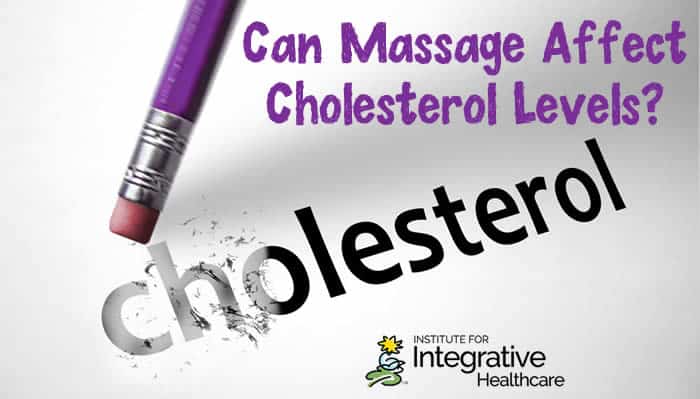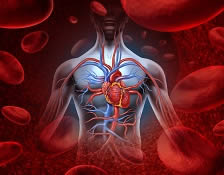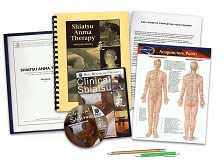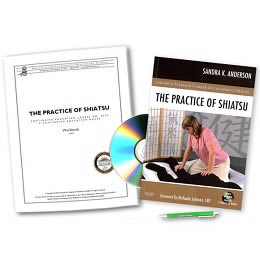

 Want to earn continuing education credit for this article? Learn more.
Want to earn continuing education credit for this article? Learn more.
Most massage therapists are knowledgeable about the range of benefits possible from their work. While the ability to deliver pain relief, induce relaxation, and assist with healing injuries are some of the well-known strengths of massage therapy, the internal organs and tissues can also benefit. Although most people assume massage primarily influences muscles, tendons, and fascia, research from Japan proves yet another way massage therapy supports a healthy body. In addition to medications, dietary changes and regular exercise, Japanese researchers have shown that massage therapy also has a place among approaches to reduce cholesterol.
About Cholesterol
A natural component of the body’s cells and blood, cholesterol is a soft waxy fat. An essential part of a healthy body, excessive amounts of cholesterol in the blood increase a person’s risk for cardiovascular disease, which can lead to stroke or heart attack. With too much cholesterol circulating in the blood, sticky clumps of plaque can attach along the artery walls, eventually capable of obstructing or blocking the flow of blood to the brain, heart and other organs. Heredity appears to make some more susceptible to high blood cholesterol, but increasingly sedentary lifestyles combined with diets high in saturated fats appear to be the main culprits.
In adults, the ranges and corresponding risk levels for total blood cholesterol are:
- Desirable = Less than 200 mg/dL
- Borderline High = 200 – 239 mg/dL
- High = Over 240 mg/dL
In general, total cholesterol is composed of three types of lipids: low density lipoproteins (LDL), high density lipoproteins (HDL) and triglycerides (TRI). Often referred to as the protective kind of cholesterol, HDL differs from the other two types of lipids because high levels of HDL are desirable. These three types of fat have a complex relationship and the level of each one is important when determining a person’s state of health. In general, high cholesterol is characterized by elevated LDL, normal or low levels of HDL, and normal or elevated TRI.
Keeping Cholesterol Levels Healthy
The causes of high cholesterol are variable; there are few health conditions or poor lifestyle habits that could possibly be excluded. Physicians usually advise the following adjustments to help bring cholesterol levels back to a balanced state:
- Weight Reduction – If overweight, even small amounts of weight loss can shift cholesterol ratios to reduce total cholesterol. Weight loss is typically accompanied by lowered triglycerides and increased HDL levels.
- Exercise – Regular physical activity by itself both reduces the risk of death from heart disease and enhances the effects of diet on LDL cholesterol levels. Moderate exercise three to five times per week can help lower blood pressure, promote weight loss in overweight individuals, reduce LDL and triglyceride levels and produce favorable levels of HDL.
- Diet – Instead of foods high in calories, saturated fat, trans fatty acids and cholesterol, eating foods high in fiber, rich in antioxidants, and abundant in Omega-3 fatty acids help reduce total cholesterol.
- Stop Smoking – In addition to increasing blood pressure, decreasing exercise tolerance, and increasing the tendency for the blood to clot, tobacco use also lowers the favorable kind of cholesterol, HDL.
Besides these lifestyle changes, physicians commonly prescribe medications to those with high cholesterol to prevent the accompanying risks. However, research from Japan demonstrates massage may be another valuable addition to help reduce cholesterol.
The Study
In an effort to evaluate the effects of massage on anxiety, the immune system and blood cholesterol levels, Japanese researchers examined participants receiving Anma massage before and after a 25-minute session. Results of the study compared baseline measures to post-massage measures, and there were significant improvement in all areas. As determined by blood tests, participants had lower total cholesterol levels after receiving Anma massage.
By focusing on the entire body, the subjects received a fully clothed Anma massage that combined pressure, friction, and touch with deep tissue bodywork. The practitioners used the following techniques: effleurage, kneading with whole hands, and kneading with thumbs along the muscle. Each massage followed a specific order, beginning with the head and neck, then moving to the shoulders, back and hips, upper limbs, and the lower limbs. Study participants were asked to let the massage therapist know the most comfortable level of pressure.
An Explanation
Although the researchers did not propose a mechanism by which massage reduces total cholesterol, there is a reasonable explanation. Massage therapy’s relaxation of the autonomic nervous system is likely behind the seemingly miraculous effect of massage over cholesterol.
When stressed, a person’s internal body chemistry changes. As part of the autonomic nervous system’s fight or flight mechanism, one of those changes involves a release of cholesterol into the bloodstream. Thus, repeated life stressors keep the autonomic system active and continually flood the blood with cholesterol. Through the relaxation effect, massage can actually end the fight or flight response. By stopping the autonomic nervous system from pumping cholesterol into circulation, a person’s cholesterol level and subsequent risk for heart disease drops.
About 40% of Americans have total blood cholesterol values of 200 mg/dL and higher. To help bring their cholesterol back to a healthy range, lifestyle changes and medications are typically combined. Likely a result of the autonomic nervous system’s reaction to massage, Japanese researchers have supplied proof that massage therapy is also a viable option for reducing high cholesterol.
Earn continuing education credit for this article contained in our Hypertension, Cholesterol & Massage series. Click here to enroll.














